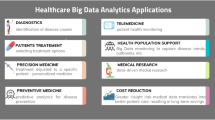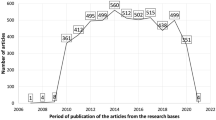Abstract
A service information system using the Internet, which connected the various people who are related to medical treatment and nursing welfare, was constructed. An intractable neurological disease patient who lives in the Onga district, Fukuoka, Japan, and the people who are related to the service were chosen as test users in an experimental model. The communicated service information was divided into open-use data (electronic bulletin board, welfare service, medical care service, and link to private company service home page) and closed-use data (the individual patient's hysterics). The open data server was installed in an Internet service provider. The open data could be accessed not only by the patient, but also by the family, information center, companies, hospitals, and nursing commodity store related to patient's nursing and medical treatment. Closed data server was installed in an information center (public health center). Only patient and information center staff can access the closed data. Patients should search and collect the service information of various medical and welfare services by themselves. Therefore, services prepared for the patient are difficult to know, and they cannot be sufficiently utilized. With the use of this information system, all usable service information became accessible, and patients could easily use it. The electronic bulletin board system (BBS) was used by patients for knowing each other or each others' family, and was used as a device for exchange of wisdom. Also, the questions for the specialist, such as doctor, dentist, teacher, physical therapist, care manager, welfare office staff member, and public health nurse, and the answers were shown on the BBS. By arranging data file, a reference of various patients in question and answer, which appeared in this BBS, was made as “advisory hints” and was added to the open data. The advisory hints became the new service information for the patients and their family. This BBS discovered the possibility of becoming an important information source for companies, hospital and, administration to know the requirements of patients and their families and the kind of services to be served. Although suppliers provide medical and welfare services for the patient, there is a tendency that the service information is sent by the suppliers at their own convenience. The information system in which various people participated was constructed in order to collect information for the patient, taking a patient-oriented approach. The result of the model test showed that this information system using Internet technology is a good system for both the service supplier and its receiver.
Similar content being viewed by others
REFERENCES
http://www.postgresql.org/
Smith, E., and Eloff, J. H. P., Security in health-care information systems-current trends. Int. J. Med. Inf. 54:39–54, 1999.
Lovell, N. H., Information technology in primary health care. Int. J. Med. Inf. 55:9–22, 1999.
Marsh, A., The creation of a global telemedical information society. Int. J. Med. Inf. 49:173–193, 1998.
Kane, B., and Sands, D. Z., Guidelines for the clinical use of electronic mail with patients. J. Am. Med. Inf. Assoc. 5(1):104–111, 1998.
Holt, N., and Crawford, M. A., Medical information service via telephone: The pioneer of physician consultation services. Ann. N.Y. Acad. Sci. 670:155–162, 1992.
Nobili, A., Gebru, F., Rossetti, A., Schettino, F., Zahn, R. W., Nicolis, E., Macario, G., Celani, L., Acik, V. O., Farina, M., and Naldi, L., Doctorline: A private toll-free telephone medical information service. Five years of activity: Old problems and new perspectives. Ann. Pharmacother. 32(1):120–125, 1998.
Ozawa, K., Ando, K., Hara, E., and Oka, T. Barrier-free concept in human communications. Hitachi Hyoron. 82(6):396–400, 2000.
Author information
Authors and Affiliations
Rights and permissions
About this article
Cite this article
Matsumura, K., Antoku, Y., Inoue, R. et al. A Network System of Medical and Welfare Information Service for the Patients, Their Families, Hospitals, Local Governments, and Commercial Companies in a Medical Service Area. Journal of Medical Systems 26, 249–254 (2002). https://doi.org/10.1023/A:1015006218776
Issue Date:
DOI: https://doi.org/10.1023/A:1015006218776




